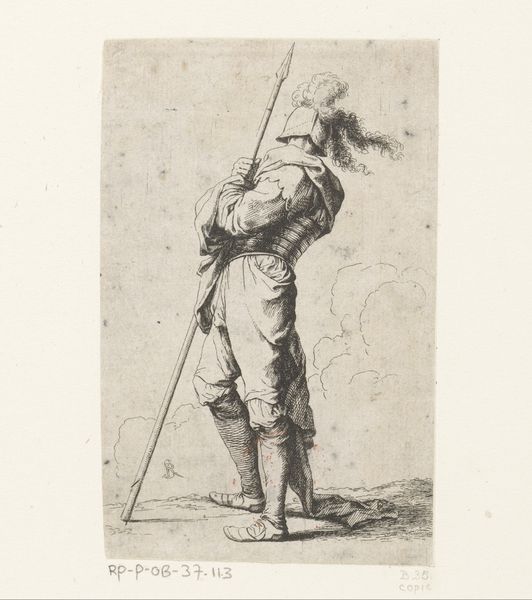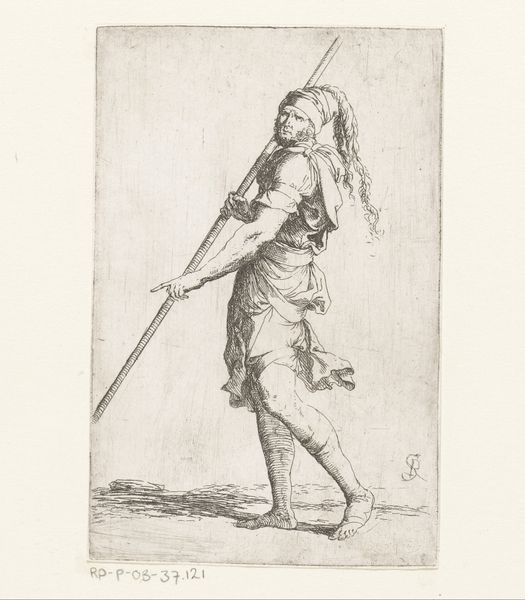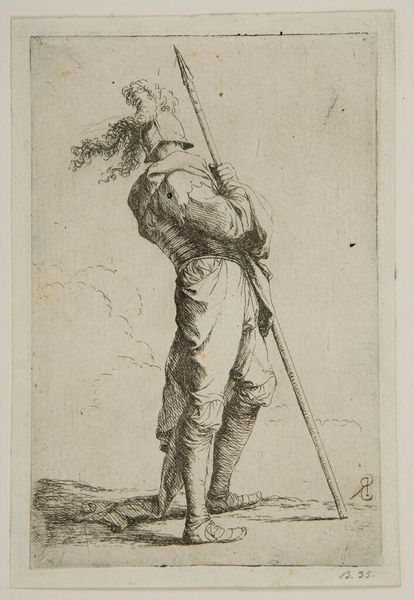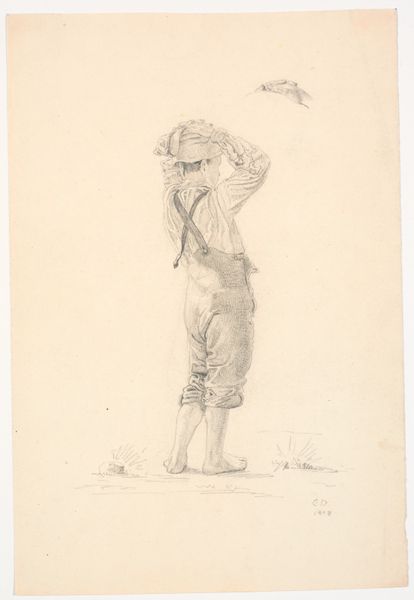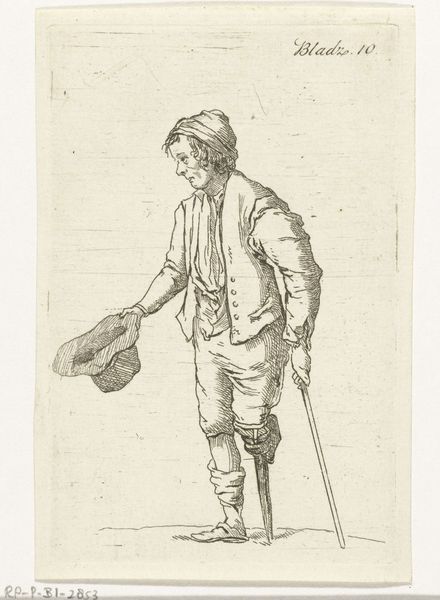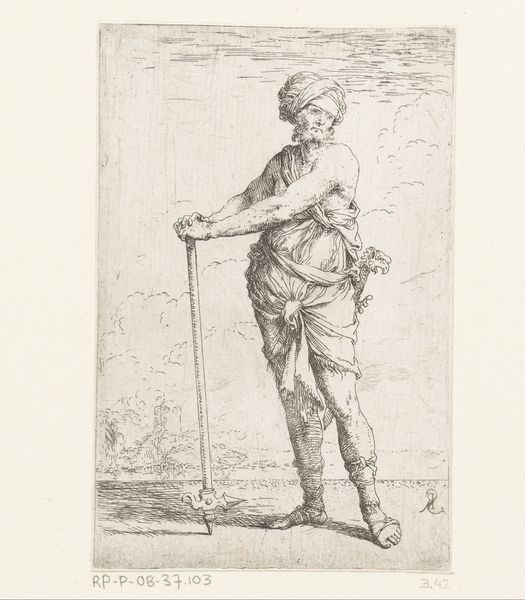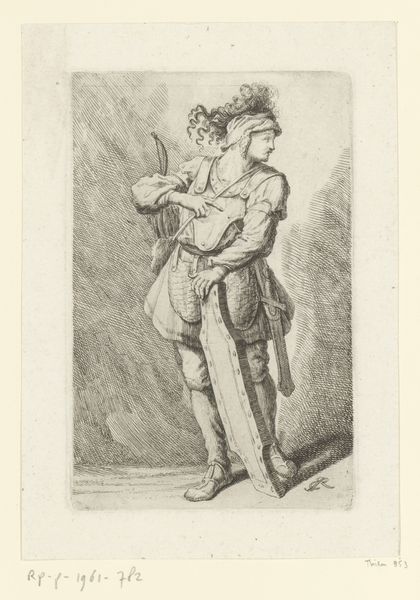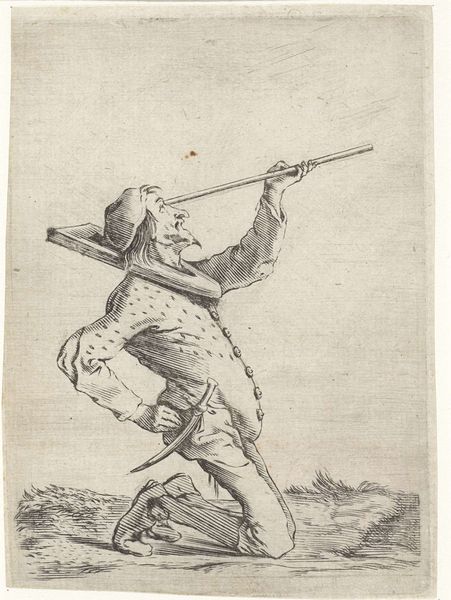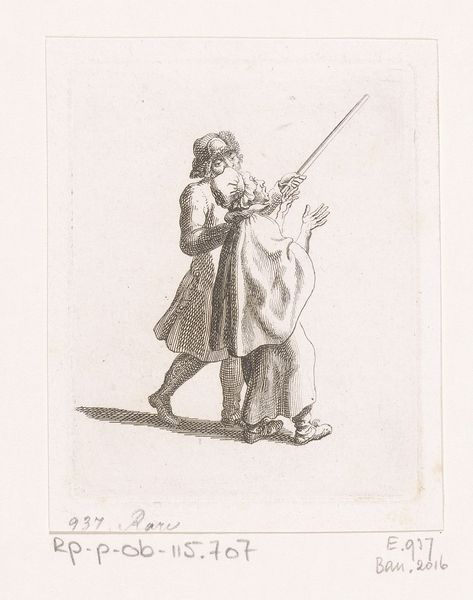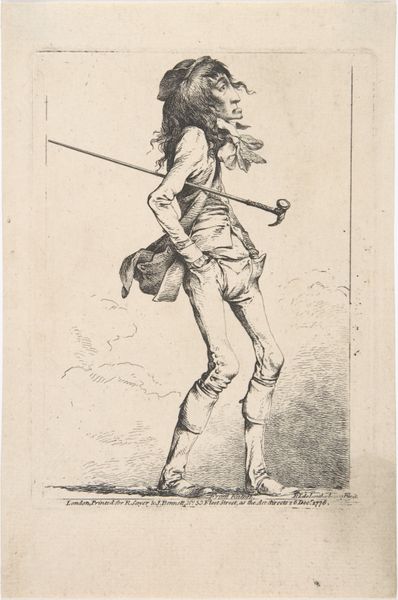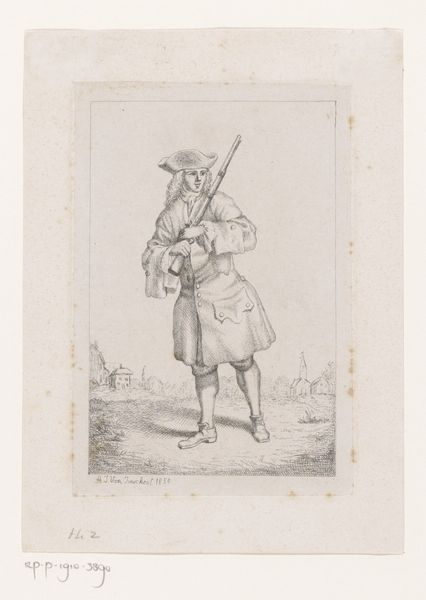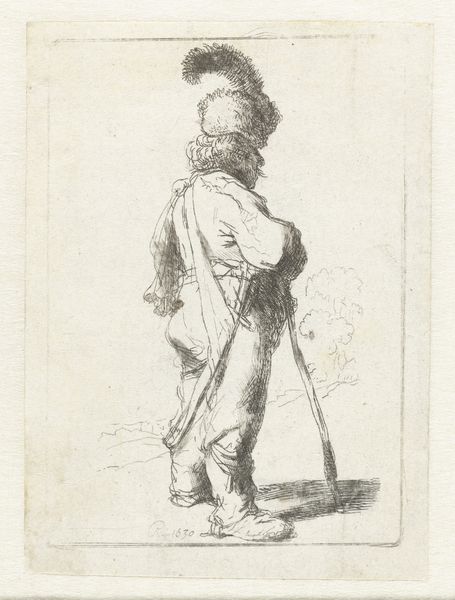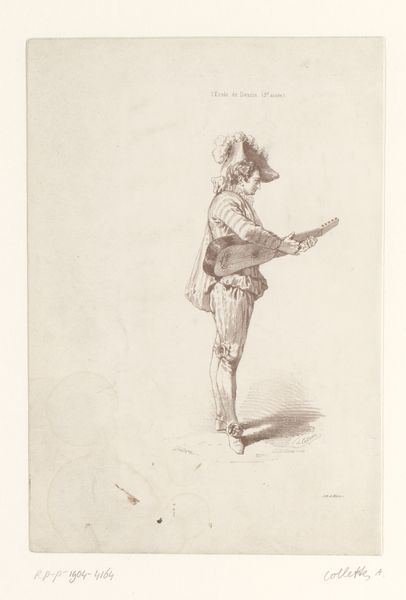
print, etching
#
portrait
#
baroque
# print
#
etching
#
pencil sketch
#
figuration
#
line
#
genre-painting
Dimensions: height 143 mm, width 93 mm
Copyright: Rijks Museum: Open Domain
Editor: So this is *Soldier with a Lance* by Salvator Rosa, created around 1656 or 1657. It’s an etching, and the first thing that strikes me is how vulnerable the soldier seems, despite the weapon. How do you interpret this work? Curator: It’s fascinating, isn't it? Rosa, known for his rebellious spirit, often used his art to subtly critique power structures. This "Soldier with a Lance," despite its militaristic subject, feels more like an anti-war statement. Think about the context: the mid-17th century was a period of immense upheaval, constant wars fueled by political and religious tensions. Editor: That’s interesting, I hadn’t thought of it that way. How does his style contribute to this reading? Curator: Look closely at the line work. It’s nervous, almost frantic. The soldier isn’t posed heroically. Instead, he’s hunched, his face obscured, seemingly burdened. The lance, traditionally a symbol of power, here almost appears to weigh him down. Editor: So you see the fragility as intentional? Curator: Absolutely. Rosa is commenting on the human cost of conflict, the dehumanizing effect war has on individuals. He subverts the glorification of military might, revealing the vulnerability beneath the surface. This etching serves as a visual counter-narrative to the dominant propaganda of the time. What do you make of that perspective? Editor: I never considered the political aspect. I appreciate how Rosa used etching – often viewed as "lesser" art form – to subvert messages of the time. It reframes my understanding completely. Thanks! Curator: Indeed, art provides a space to understand these perspectives and histories more openly. I am so glad we took this journey of discovery together!
Comments
No comments
Be the first to comment and join the conversation on the ultimate creative platform.
